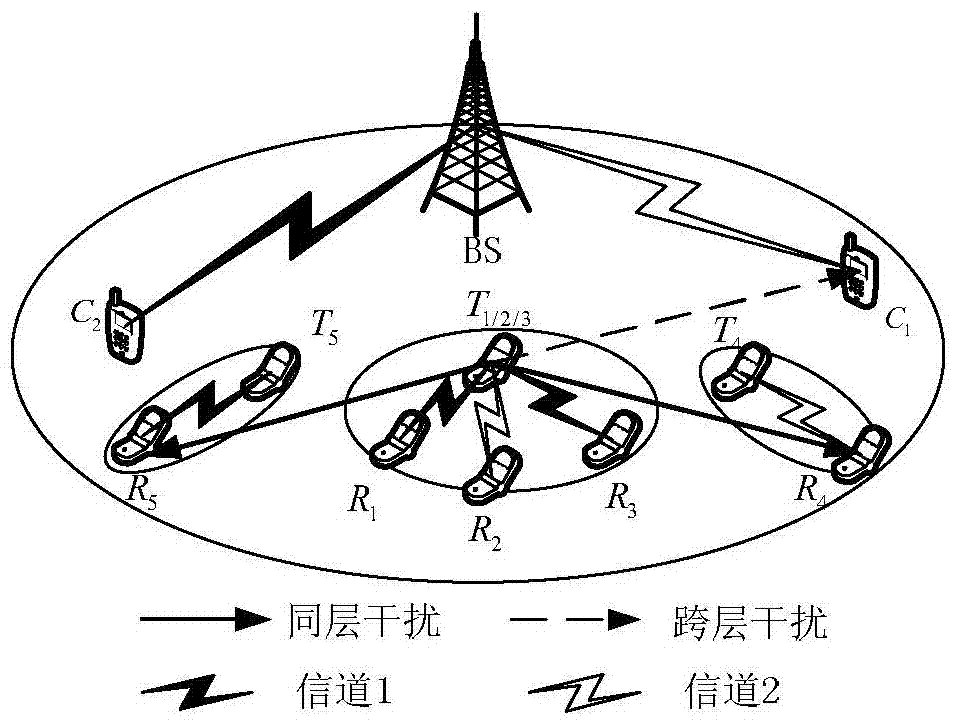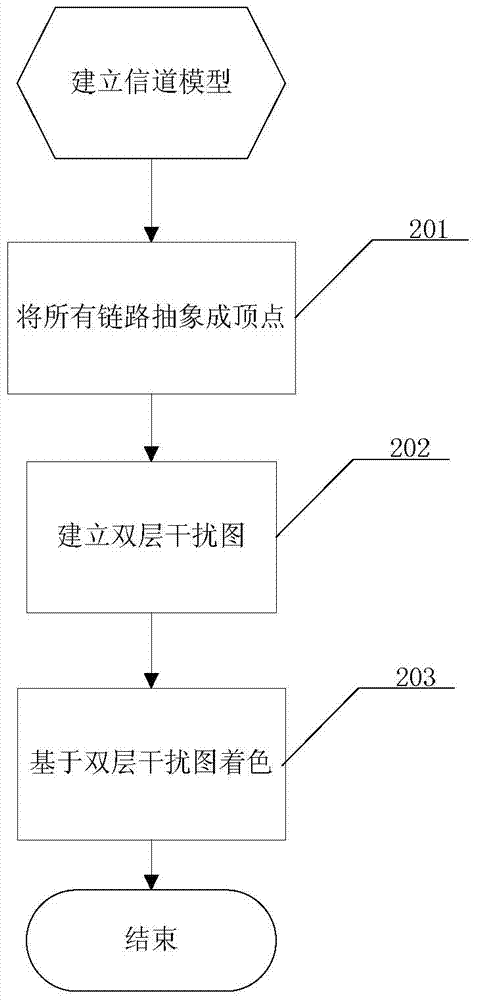A method of allocating channel resources based on double-layer interference graph coloring
A channel resource and channel allocation technology, applied in the field of channel resource allocation, can solve problems such as communication quality degradation, spectrum resource waste, user interference, etc., and achieve the effect of increasing the average acquisition rate, improving spectrum utilization, and satisfying communication quality
- Summary
- Abstract
- Description
- Claims
- Application Information
AI Technical Summary
Problems solved by technology
Method used
Image
Examples
Embodiment Construction
[0033] The present invention is mainly applied to heterogeneous networks where short-distance communication and cellular communication exist simultaneously, and is also applicable to similar heterogeneous networks for adjusting appropriate parameters according to requirements. Below in conjunction with accompanying drawing and embodiment, the specific embodiment of the present invention is described in further detail:
[0034] figure 1 It is an application scene diagram of the present invention, which includes cellular terminals and short-distance terminals. The interference between cellular terminals is avoided by using orthogonal channel resources between cellular terminals. Short-distance terminals reuse the channel resources of cellular terminals. Therefore, cellular terminals The interference of terminals mainly comes from short-distance terminals, and the interference of short-distance terminals mainly comes from base stations and other short-distance terminals.
[0035...
PUM
 Login to View More
Login to View More Abstract
Description
Claims
Application Information
 Login to View More
Login to View More - R&D
- Intellectual Property
- Life Sciences
- Materials
- Tech Scout
- Unparalleled Data Quality
- Higher Quality Content
- 60% Fewer Hallucinations
Browse by: Latest US Patents, China's latest patents, Technical Efficacy Thesaurus, Application Domain, Technology Topic, Popular Technical Reports.
© 2025 PatSnap. All rights reserved.Legal|Privacy policy|Modern Slavery Act Transparency Statement|Sitemap|About US| Contact US: help@patsnap.com



